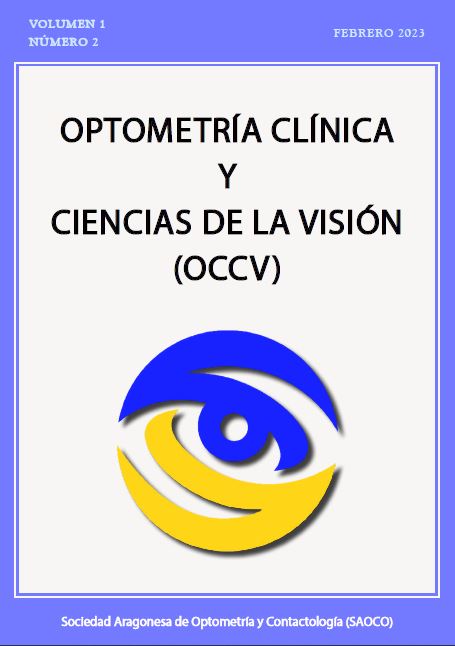Visual Relationship between Athletes and Non-Athletes in Outdoor Activities
Main Article Content
Abstract
Relevance: We propose a survey to assess the visual status of two distinct populations: athletes and non-athletes, focusing on increased outdoor activity.
Purpose: In the field of Optometry, it is common to use questionnaires to assess the visual status of the general population, and our aim is to create a new assessment instrument in this regard.
Methods: In this study, we used an online questionnaire with authorized informed consent consisting of 58 questions, and conducted an analysis with SPSS of all variables obtained from 312 individuals with a mean age of 25.17±13.07 years.
Results: We obtained 11 factors, with the first 7 being analyzed in detail to assess a high number of significant differences regarding 6 variables to understand the impact of indoor and outdoor tasks on athletes and non-athletes.
Conclusions: Physical activity and outdoor activity avoid visual compensation across all age groups, but particularly in children aged 6 to 12 years old.
Article Details

This work is licensed under a Creative Commons Attribution-NonCommercial 4.0 International License.
How to Cite
References
De-Hita-Cantalejo C, Benítez-Rodríguez MD, Sánchez-González MC, Bautista-Llamas MJ, Sánchez-González JM. Accommodation Response Variations in University Students under High Demand for Near-Vision Activity. Life (Basel). 2022;12(11).
Read SA, Hopkins S, Black AA, Bentley SA, Scott J, Wood JM. Prevalence of vision conditions in children in a very remote Australian community. Clin Exp Optom. 2022:1-7.
Thorud HS, Mork R, Bjørset CO, Gilson SJ, Hagen LA, Langaas T, et al. Laboured reading and musculoskeletal pain in school children - the role of lifestyle behaviour and eye wear: a cross-sectional study. BMC Pediatr. 2022;22(1):416.
Gebru EA, Mekonnen KA. Prevalence and Factors Associated with Myopia Among High School Students in Hawassa City, South Ethiopia, 2019. Clin Optom (Auckl). 2022;14:35-43.
Carrijo MF, Augusto ACS, Alencar TDS, Alves AM, Luchesi BM, Martins TCR. Relationship between depressive symptoms, social isolation, visual complaints and hearing loss in middle-aged and older adults. Psychiatriki. 2022.
Wang S, Tripathy SP, Öğmen H. Capacity and Allocation across Sensory and Short-Term Memories. Vision (Basel). 2022;6(1).
Karthikeyan SK, Ashwini DL, Priyanka M, Nayak A, Biswas S. Physical activity, time spent outdoors, and near work in relation to myopia prevalence, incidence, and progression: An overview of systematic reviews and meta-analyses. Indian J Ophthalmol. 2022;70(3):728-39.
Alamri A, Amer KA, Aldosari AA, Althubait BMS, Alqahtani MS, Al Mudawi AAM, et al. Computer vision syndrome: Symptoms, risk factors, and practices. J Family Med Prim Care. 2022;11(9):5110-5.

